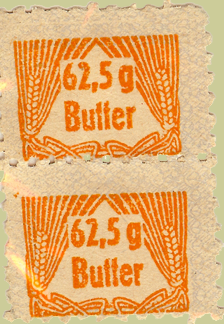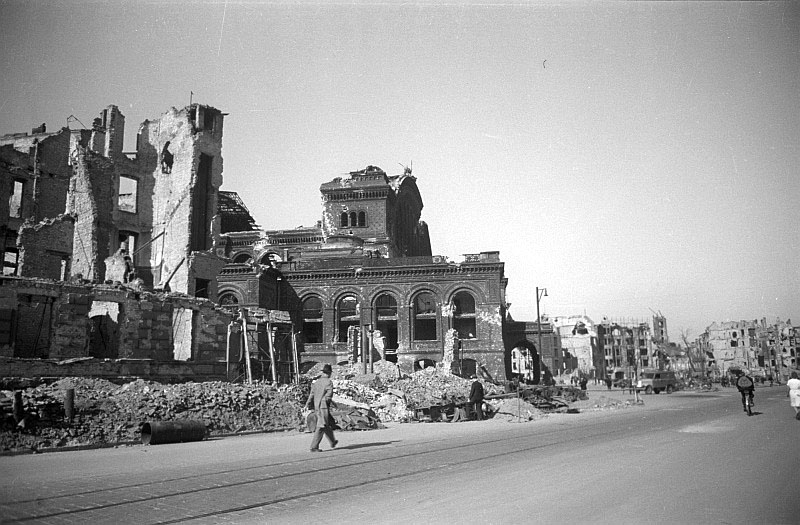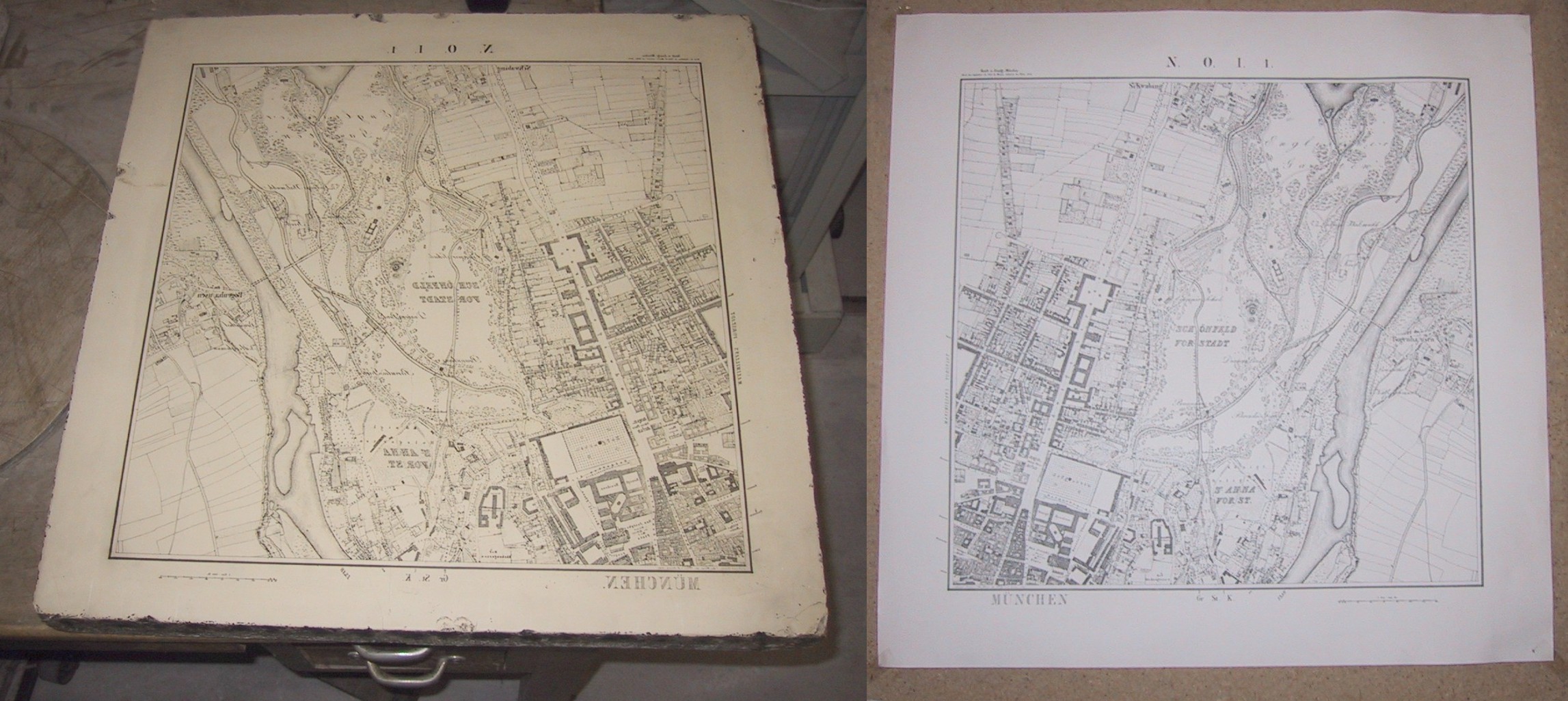|
Oskar Huth
Oskar Huth (26 February 1918 – 21 August 1991) a German graphic artist, forger, a word smith and compelling teller of tales, a drinker and a noted Bohemianism, bohemian who never really seemed comfortable if he had a permanent residence and who walked everywhere in his home city, Berlin, because he was passionately suspicious of public transport. More than that, he became notable in Germany for Resistance during World War II, resisting the inhumanity of Nazi Germany, the Nazi regime. During World War II he got hold of a printing press which he installed in the cellar of a house vacated by a friend who had sought refuge from the bombing by moving to the Thuringian countryside after her husband was killed in the war. Under the wartime conditions of the time, people who did not officially exist had no access to food rations. By producing high quality forged identity documents and ration stamps, Huth enabled many people who, officially, did not exist (Anti-Jewish legislation in pre-wa ... [...More Info...] [...Related Items...] OR: [Wikipedia] [Google] [Baidu] |
Graphic Artist
A graphic designer is a practitioner who follows the discipline of graphic design, either within companies or organizations or independently. They are professionals in design and visual communication, with their primary focus on transforming linguistic messages into graphic manifestations, whether tangible or intangible. They are responsible for planning, designing, projecting, and conveying messages or ideas through visual communication. Graphic design is one of the most in-demand professions with significant job opportunities, as it allows leveraging technological advancements and working online from anywhere in the world. Education Referring back to the history of graphic design development, it is evident that the design field was always a skill demanding profession due to variability of printing responsibilities. Unlike pre digital era, where design craft was rather an exclusive practice, the current situation in the field is more accessible and welcoming for everyone. Th ... [...More Info...] [...Related Items...] OR: [Wikipedia] [Google] [Baidu] |
Hitler Youth
The Hitler Youth ( , often abbreviated as HJ, ) was the youth wing of the German Nazi Party. Its origins date back to 1922 and it received the name ("Hitler Youth, League of German Worker Youth") in July 1926. From 1936 until 1945, it was the sole official boys' youth organisation in Germany (although the League of German Girls was a wing of it) and it was partially a paramilitary organisation. It was composed of the Hitler Youth proper for male youths aged 14 to 18, and the Deutsches Jungvolk, German Youngsters in the Hitler Youth ( or "DJ", also "DJV") for younger boys aged 10 to 14. With the German Instrument of Surrender, surrender of Nazi Germany in 1945, the organisation ''de facto'' ceased to exist. On 10 October 1945, the Hitler Youth and its subordinate units were outlawed by the Allied Control Council along with other Nazi Party organisations. Under Strafgesetzbuch section 86a, Section 86 of the Strafgesetzbuch, Criminal Code of the Germany, Federal Republic of Germ ... [...More Info...] [...Related Items...] OR: [Wikipedia] [Google] [Baidu] |
Wilmersdorf
Wilmersdorf () is an inner-city locality of Berlin which lies south-west of the central city. Formerly a borough by itself, Wilmersdorf became part of the new Boroughs of Berlin, borough of Charlottenburg-Wilmersdorf following Berlin's 2001 administrative reform. History The village near Berlin was first mentioned in 1293 as ''Wilmerstorff'', probably founded in the course of the German ''Ostsiedlung'' under the House of Ascania, Ascanian margraves of Margraviate of Brandenburg, Brandenburg. From the 1850s on ''Deutsch-Wilmersdorf'' was developed as a densely settled, affluent residential area, which in 1920 became a part of Greater Berlin Act, Greater Berlin. The former borough of Wilmersdorf included the localities of Halensee, Schmargendorf and Grunewald (locality), Grunewald. During the era of the Weimar Republic Wilmersdorf was a popular residential area for artists and intellectuals. In 1923 the foundation stone for the first mosque in Germany was laid on the initiative o ... [...More Info...] [...Related Items...] OR: [Wikipedia] [Google] [Baidu] |
Kreuzberg
Kreuzberg () is a district of Berlin, Germany. It is part of the Friedrichshain-Kreuzberg borough located south of Berlin-Mitte, Mitte. During the Cold War era, it was one of the poorest areas of West Berlin, but since German reunification in 1990, it has undergone significant gentrification and is now known for its vibrant arts scene. The borough is known for its large percentage of immigrants and descendants of immigrants, many of whom are of Turks in Germany, Turkish ancestry. This influx began in the 1960s and 1970s when West Germany invited 'Gastarbeiter' (guest workers) from various countries, including Turkey, Italy, Greece, and Yugoslavia, to address labour shortages and aid in Reconstruction of Germany, post-war reconstruction. As of 2006, 31.6% of Kreuzberg's inhabitants did not have German citizenship. Kreuzberg is known for its diverse cultural life and experimental alternative lifestyles, making it an attractive area for many. However, some parts of the district ar ... [...More Info...] [...Related Items...] OR: [Wikipedia] [Google] [Baidu] |
Zeulenroda
Zeulenroda-Triebes () is a German town in the district of Greiz in the state of Thuringia. Zeulenroda-Triebes is situated in the south of Greiz in the mountains of the Thuringian Slate Mountains (Thüringer Schiefergebirge), on the border with Saxony. The population of Zeulenroda-Triebes in 2006 was about 18,000. The largest company is Bauerfeind AG. The most famous sight in the town is the neoclassical town hall, built in 1827. Zeulenroda-Triebes is also known for the International Thuringia Women's Cycling Tour. Zeulenroda unt Bf station lies on the Werdau–Mehltheuer railway. History Zeulenroda was mentioned in a document for a Saalburg convent as early as 1325, in Medieval Latin as ''Zulenrode''. The village became a town in 1438. Zeulenroda belonged to the principality of the House of Reuss Elder Line for several centuries. On April 16, 1945 the United States Army took over Zeulenroda without a battle. On July 1 the Red Army occupied the town. In 1949 Zeulenroda and T ... [...More Info...] [...Related Items...] OR: [Wikipedia] [Google] [Baidu] |
Berlin-Wilmersdorf
Wilmersdorf () is an inner-city locality of Berlin which lies south-west of the central city. Formerly a borough by itself, Wilmersdorf became part of the new borough of Charlottenburg-Wilmersdorf following Berlin's 2001 administrative reform. History The village near Berlin was first mentioned in 1293 as ''Wilmerstorff'', probably founded in the course of the German ''Ostsiedlung'' under the Ascanian margraves of Brandenburg. From the 1850s on ''Deutsch-Wilmersdorf'' was developed as a densely settled, affluent residential area, which in 1920 became a part of Greater Berlin. The former borough of Wilmersdorf included the localities of Halensee, Schmargendorf and Grunewald. During the era of the Weimar Republic Wilmersdorf was a popular residential area for artists and intellectuals. In 1923 the foundation stone for the first mosque in Germany was laid on the initiative of some Islamic students in Wilmersdorf. It was completed in 1925. The so called Wilmersdorfer Moschee (''M ... [...More Info...] [...Related Items...] OR: [Wikipedia] [Google] [Baidu] |
Concentration Camp
A concentration camp is a prison or other facility used for the internment of political prisoners or politically targeted demographics, such as members of national or ethnic minority groups, on the grounds of national security, or for exploitation or punishment. Prominent examples of historic concentration camps include the British confinement of non-combatants during the Second Boer War, the Internment of Japanese Americans, mass internment of Japanese-Americans by the US during the Second World War, the Nazi concentration camps (which later morphed into extermination camps), and the Soviet labour camps or gulag. History Definition The term ''concentration camp'' originates from the Spanish–Cuban Ten Years' War when Spanish forces detained Cuban civilians in camps in order to more easily combat guerrilla forces. Over the following decades the British during the Second Boer War and the Americans during the Philippine–American War also used concentration camps. The term "c ... [...More Info...] [...Related Items...] OR: [Wikipedia] [Google] [Baidu] |
Berliner Woche
''Berliner Woche'' (until September 2003: ''Berliner Wochenblatt''/''Hallo Berlin Wochenblatt'') is a weekly advertising magazine in Berlin. The magazine, financed by advertising revenues, is published every Wednesday in 32 different local editions for the districts of Berlin. The total circulation is over one and a half million copies. Two local editions are published under the traditional title ''Spandauer Volksblatt''. History and profile The first issue was published in May 1983 in the district of Neukölln. The ''Spandauer Volksblatt'' had already existed as a daily newspaper since March 1946. Axel Springer Verlag took over the title in 1993 and continued the paper as an advertising magazine. All local editions are published by ''Berliner Wochenblatt Verlag GmbH'', a subsidiary of Funke Mediengruppe (until 30 April 2014: Axel Springer SE Axel Springer SE () is a European multinational corporation, multinational mass media, mass and online media company, based in Berlin, G ... [...More Info...] [...Related Items...] OR: [Wikipedia] [Google] [Baidu] |
Motor Skill
A motor skill is a function that involves specific movements of the motor system, body's muscles to perform a certain task. These tasks could include walking, running, or riding a bike. In order to perform this skill, the body's nervous system, muscles, and brain have to all work together. The goal of motor skill is to optimize the ability to perform the skill at the rate of success, precision, and to reduce the energy consumption required for performance. Performance is an act of executing a motor skill or task. Continuous practice of a specific motor skill will result in a greatly improved performance, which leads to motor learning. Motor learning is a relatively permanent change in the ability to perform a skill as a result of continuous practice or experience. A fundamental movement skill is a developed ability to move the body in coordinated ways to achieve consistent performance at demanding physical tasks, such as found in sports, combat or personal animal locomotion, locom ... [...More Info...] [...Related Items...] OR: [Wikipedia] [Google] [Baidu] |
The Good Soldier Švejk
''The Good Soldier Švejk'' () is an unfinished satirical dark comedy novel by Czech writer Jaroslav Hašek, published in 1921–1923, about a good-humored, simple-minded, middle-aged man who appears to be enthusiastic to serve Austria-Hungary in World War I. ''The Good Soldier Švejk'' is the abbreviated title; the original Czech title of the work is ''Osudy dobrého vojáka Švejka za světové války'', or ''The Fateful Adventures of the Good Soldier Švejk During the World War'' in English. The book is the most translated novel of Czech literature, having been translated into over 50 languages. Publication Hašek originally intended ''Švejk'' to cover a total of six volumes, but had completed only three (and started on the fourth) upon his death from heart failure on January 3, 1923. The novel as a whole was originally illustrated (after Hašek's death) by Josef Lada and more recently by Czech illustrator Petr Urban. The volumes are: # ''Behind the Lines'' (''V zázem� ... [...More Info...] [...Related Items...] OR: [Wikipedia] [Google] [Baidu] |
Lithography
Lithography () is a planographic method of printing originally based on the miscibility, immiscibility of oil and water. The printing is from a stone (lithographic limestone) or a metal plate with a smooth surface. It was invented in 1796 by the German author and actor Alois Senefelder and was initially used mostly for sheet music, musical scores and maps.Meggs, Philip B. ''A History of Graphic Design''. (1998) John Wiley & Sons, Inc. p 146, .Carter, Rob, Ben Day, Philip Meggs. ''Typographic Design: Form and Communication'', Third Edition. (2002) John Wiley & Sons, Inc. p. 11. Lithography can be used to print text or images onto paper or other suitable material. A lithograph is something printed by lithography, but this term is only used for printmaking, fine art prints and some other, mostly older, types of printed matter, not for those made by modern commercial lithography. Traditionally, the image to be printed was drawn with a greasy substance, such as oil, fat, or wax on ... [...More Info...] [...Related Items...] OR: [Wikipedia] [Google] [Baidu] |





